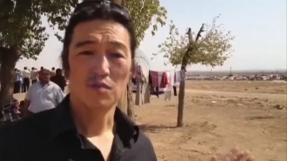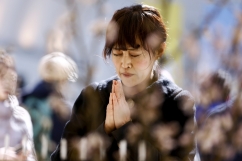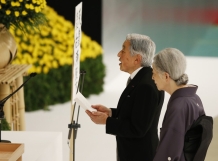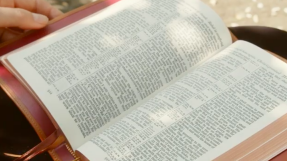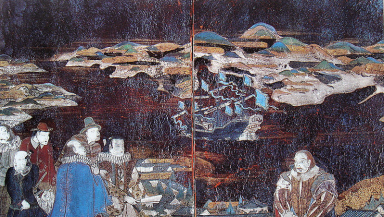
Underground Christians kept the faith in Japan during 300 years of often brutal persecution – but their story is barely known in the Western world.
Now the 'Hidden Christians' are being recognised in an exhibition showcasing the moving story of Christians who remained true to their faith without priests, seminaries or churches.
The Vatican Library and Secret Archives contain testimonies of Christians who between the 16th and 19th centuries lived under violence and humiliation.
Collected by Fr Mario Marega, a missionary to Japan in the early 20th century, letters and documents written on fragile rice paper have been recently restored by the Vatican archives and library.
The Hidden Christians story begins when Christianity was first brought to Japanin 1549. A thriving Church grew up. However, persecution broke out under the ruling Shogun Toyotomi Hideyoshi, who was alarmed by the report of a Spanish captain whose vessel was shipwrecked. In an effort to impress the Japanese, the captain claimed that the missionaries were there to prepare the way for a European conquest. On a winter's morning in February 1597, 26 Christians were crucified.

Hidyoshi's successor Tokugawa Ieyasu decided to eliminate Christianity from Japan altogether. A Protestant English trader, Will Adams, told the Shogun about the religious wars that were ruining Europe and laid the blame on the Catholic priests. In 1614 an edict of expulsion declared that "the Kirishitan band have come to Japan...longing to disseminate an evil law, to overthrow true doctrine, so that they may change the government of the country and obtain possession of the land" (CR Boxer, The Christian Century in Japan). At this point there were an estimated 300,000 Christians in the country, with Nagasaki described as 'The Rome of Japan' for the number of Christians there.
Under Iemitsu, appalling cruelty was used against Christians. One English witness described seeing 55 people including women and children burnt alive. Christians among the spectators sang hymns and psalms as they burned. Seeing that martyrdom was embraced by Christians, Iemitsu turned to torture.
A favourite method was to hang Christians in a pit half full of excrement, leaving one arm free so that the sign of recantation could be made; most survived only a day or two, though one young woman lived for two weeks. In 1632 the Christian cause suffered a heavy blow when the Portuguese Provincial missionary, Christovao Ferreira, apostasized after six hours in the pit and began to collaborate with his former persecutors.
Imietsu forbade missionaries to return to Japan. Some tried, including a group of 10, captured in 1643 and tortured into denying their faith. A Dutch eyewitness wrote that they "looking exceedingly pitiful, their eyes and cheeks strangely fallen in; their hands black and blue and their whole bodies sadly misused and macerated by torture".
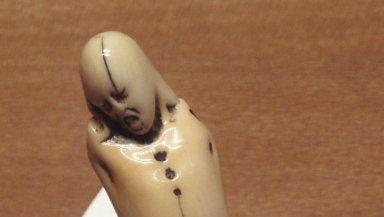
Among methods used to determine whether someone was a Christian was the "fumie", a picture of Jesus or the Virgin Mary on which suspected Christians were ordered to trample. If they refused or were hesitant it was taken as sign of guilt. Many are preserved at the Ueno Museum in Toyko, rubbed flat by the trampling of thousands of feet. The fumie is at the heart of Shusako Endo's famed novel Silence.
Up to 6,000 martyrs may have died between 1614-1640 alone, and for many years the Church was presumed extinct. However, in 1865, after Japan had been forced to open its borders to foreign trade and foreign residents, villagers from a village near Nagasaki visited a new Catholic church built by the Paris Foreign Missions Society. They told the priest that they and their families had maintained Christian worship in secret for 250 years. Their prayers contained smatterings of old Portuguese and Latin and they had preserved old rosaries that belonged to their martyred fathers.
It was later found that tens of thousands of believers survived. Pope Pius IX called it a miracle.










